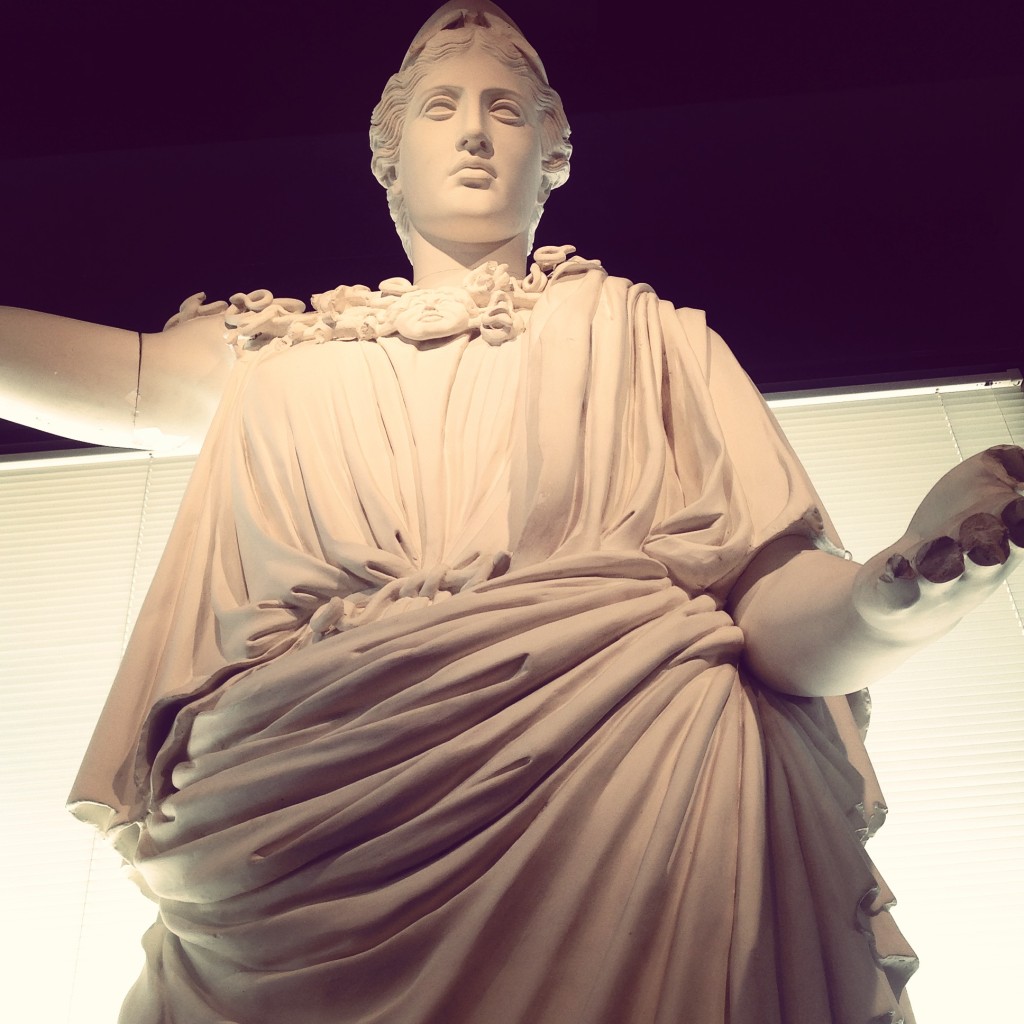
Earlier this week, The Wild Hunt reported on a complaint made by a legislator in Missouri, who petitioned the governor not to reinstall a statue of the goddess Ceres that had been temporarily removed from its place atop the dome of the state capitol. “I appeal to your good judgment, as a follower of Jesus Christ,” said Rep. Mike Moon (R-Ash Grove) in his letter to the governor, “to direct the Capitol Commission to not return the false god Ceres, the Roman goddess, to the top of the Capitol dome.”
As a Missourian, naturally the story caught my attention. I have visited the capitol many times for rallies and lobbying as a union activist, and during those visits I have often stopped to admire the statues of figures from classical mythology that are set around the capitol. Jefferson City usually feels hostile to me; the political winds in Missouri have often blown against things I care about, and Mike Moon is hardly the only politician in the state who justifies his reactionary politics by invoking the supremacy of Christianity. It’s not a friendly place for lefty witches like me, but I still find some comfort in the images of old gods, their features cast in stone or bronze, that surround the seat of power.
https://www.instagram.com/p/Bvg_2SpngHN/
TWH‘s news story emphasized the historical nature of neoclassical statuary like Ceres in American architectural tradition. It is important to emphasize that these statues were not installed to promote a particular religious tradition; indeed, the people who created them did not understand them to be religious icons at all. They were more like literary metaphors or cultural symbols – Ceres, for example, represented the agricultural industry of Missouri, which at the time of the statue’s commission was the largest part of the state’s economy. Nobody expected that the statue would convince anyone to worship Ceres; the statue did not then – and does not now – reflect a problem for the first amendment of the United States, which prohibits the establishment of a state religion. Mike Moon’s complaint is absurd. (Thankfully, it appears as though he will be roundly ignored. Would that he were ignored more often.)
That said, I am always interested in the reception of pagan imagery after the Pagan revival. At the time the statue of Ceres was installed, it is true that there was no organized Neo-Pagan religion around that might have ascribed religious meanings to it – but that’s no longer the case today. There are quite a few people out there now who might consider themselves devotees of Ceres – I imagine some of them might be reading this column.
I have written previously about interacting with objects in museums that speak to my Pagan experience – plaster casts of classical statuary, an ancient shrine to Ishtar, a Renaissance statue of Pan, and so on. What I tried to work through in those pieces was the question of how modern Pagans could meaningfully include those kinds of objects, so inspirational to the development of our religions, in our practice while they are held behind glass for a secular purpose. Ishtar’s shrine is housed in its museum case for educational purposes; it is not supposed to be “used” in the way it was at the time of its creation (nor, should I say, do I think it should be – it’s ancient and fragile, and a thing that gets used is a thing that will eventually get broken.) Modern Pagans who seek inspiration from these ancient objects have to find ways to operate within the spaces made available to us by their secular caretakers.

Athena Valletri. Plaster cast of a Roman copy of a Greek original by Kresilas or Alkamenes, ca 420 BCE. University of Missouri, Columbia, MO [E. Scott]
Something similar is happening with the statue of Ceres in Jefferson City, I think. While the statue is not a religious object in the sense of its relationship to the state and its power, it’s also not right to claim that it is entirely secular. Objects do not only reflect the conditions at the time of their creation; they continue to exist throughout the time that follows, and what a statue means in the 1920s could be very different in the 2020s.
In the time, since Ceres was first erected upon the Missouri capitol, Paganism has indeed been reborn and renewed. That doesn’t change anything about the statue’s official purpose as a historical marker of a state’s promotion of its agricultural past, but it does open up space for modern Pagans to reflect on and repurpose it as something with spiritual importance to us.
My own conception of Paganism is of a religion that is, at heart, always a little subversive, a little mischievous, a little at odds with structures of power and authority and “official purpose.” Paganism lives in the shadows and margins, taking all the dead and denuded items from our disenchanted world and bringing them back to life and vitality, and that includes the neoclassical invocations of the old gods. Ceres was not created to be worshiped, but I plan to whisper a prayer to her the next time I’m at the capitol anyway.
The Wild Hunt is not responsible for links to external content.
To join a conversation on this post:
Visit our The Wild Hunt subreddit! Point your favorite browser to https://www.reddit.com/r/The_Wild_Hunt_News/, then click “JOIN”. Make sure to click the bell, too, to be notified of new articles posted to our subreddit.